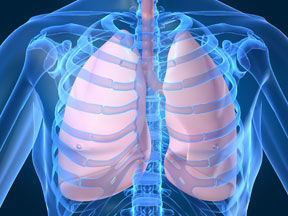
(NewsUSA) – Fungal infections in the lungs are a serious, underreported medical issue.
– Fungal infections in the lungs are a serious, underreported medical issue.
Most people don’t realize that the air we breathe is laden with the spores of many different types of fungi and molds. For the large majority, this isn’t a problem. The spores either get trapped in our airway mucus and expelled, or are tackled and neutralized by our immune systems.
But in many people, especially those with compromised immune systems or lungs, such as those who have cystic fibrosis (CF), the spores germinate into fungi that cause both serious infections and allergic reactions.
Usually caused by the spore-forming mold, Aspergillus fumigatus, the problem is particularly acute in CF patients, with half of that patient population requiring treatment for fungal infections in their lungs and, in the case of severe asthma, affecting millions of patients.
“This infection can cause an allergic reaction, known as allergic bronchopulmonary aspergillosis or ABPA, that impairs lung function,” explains Dr. Richard Moss, former chief of the Pediatric Pulmonary and Allergy Divisions at Stanford University.
Fighting these fungal lung infections has been difficult.
There are oral anti-fungal drugs, such as one called itraconazole. The problem is getting enough of the drug through the bloodstream to the lungs, where it’s needed. Getting sufficient lung concentrations requires giving high oral doses that can cause severe side effects, including liver toxicity.
The ideal alternative would be to deliver the drug directly to the lungs of patients by inhalation. However, due to dosing limitations, standard inhalation technologies aren’t able to do this.
But now there’s an innovative new technology from a Massachusetts-based company, Pulmatrix (NASDAQ:PULM), which uses small, dense particles that easily fly into the lungs. The company has incorporated itraconazole to the particles, enabling it to be efficiently delivered.
Preclinical studies have already shown that Pulmatrix’s experimental anti-fungal inhaled drug can achieve high drug concentrations in the lungs, with very low amounts in the bloodstream.
“This inhaled drug technology has great potential to treat serious fungal infections and the allergies those infections cause without the dangerous side effects and drug-drug interactions of using oral drugs,” says Moss.






